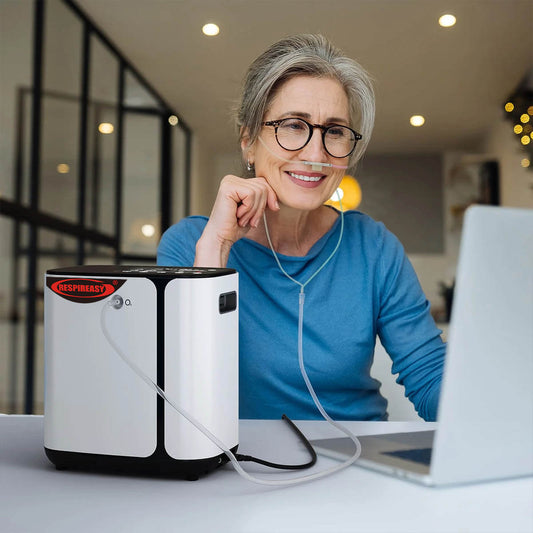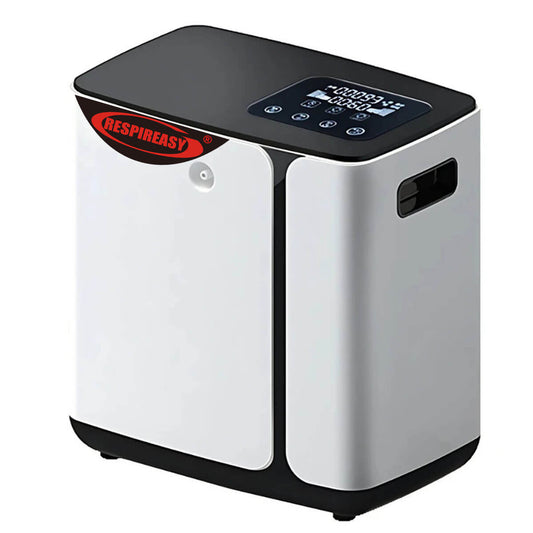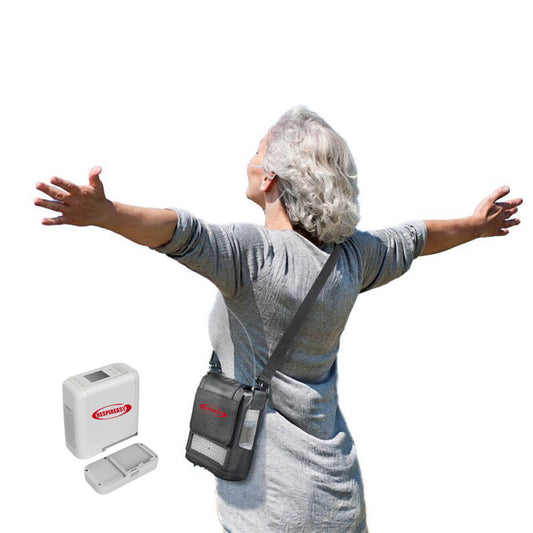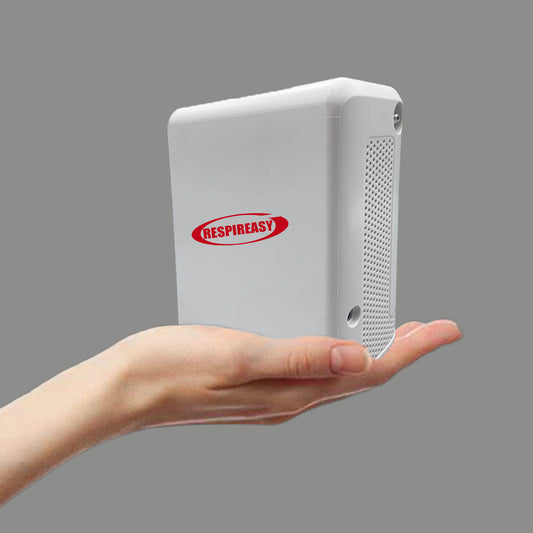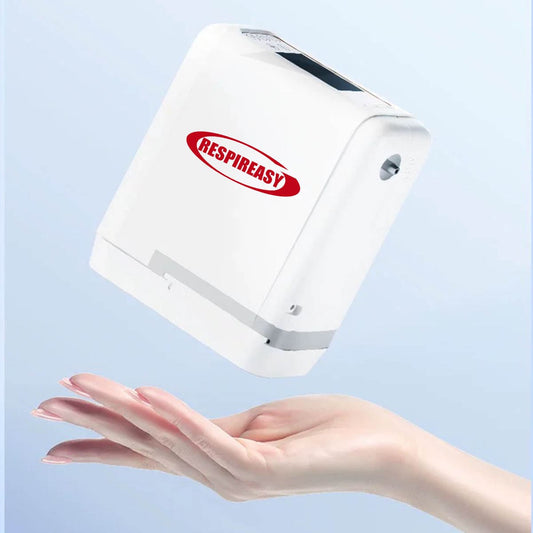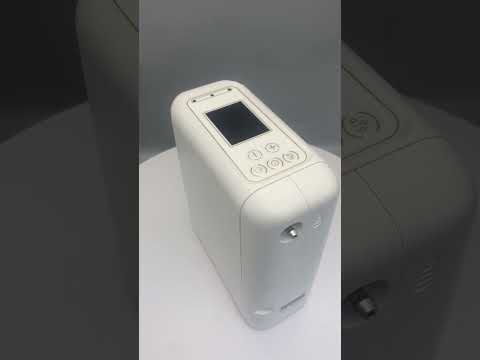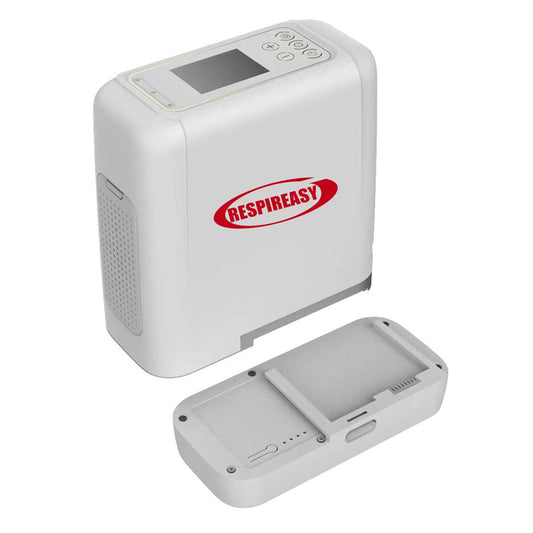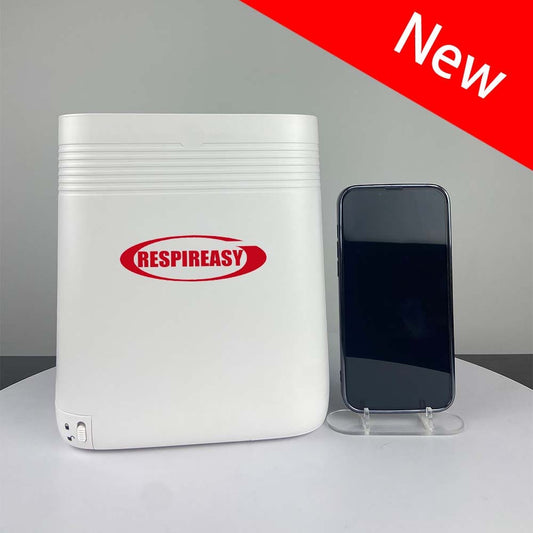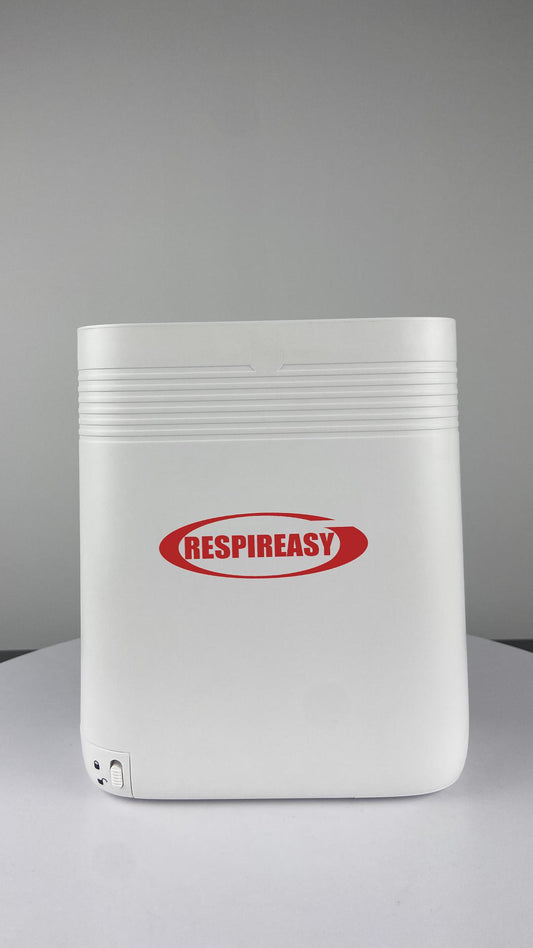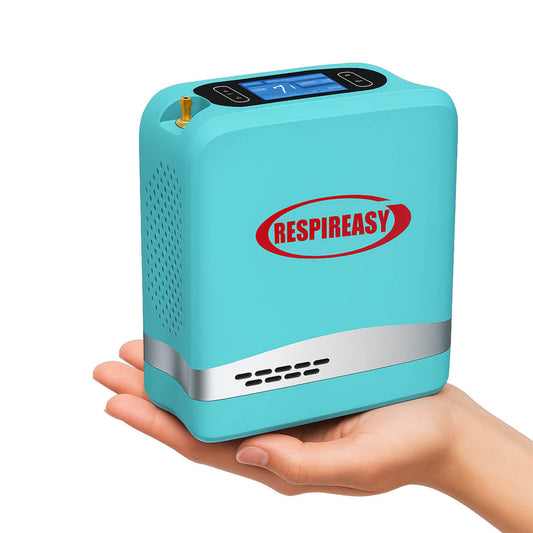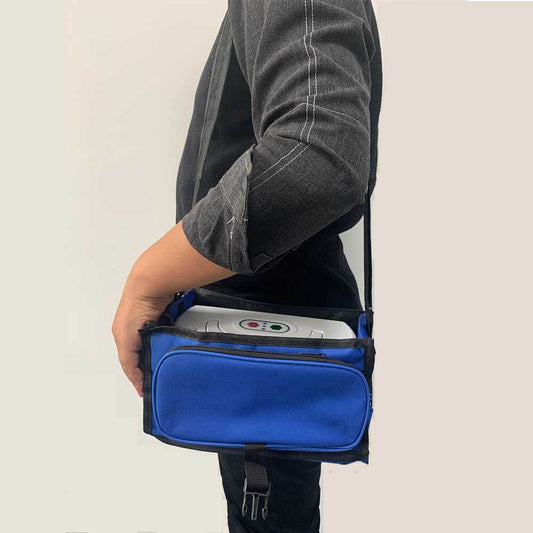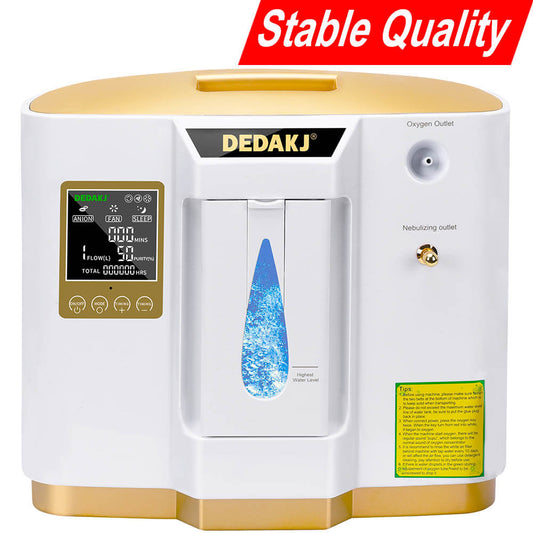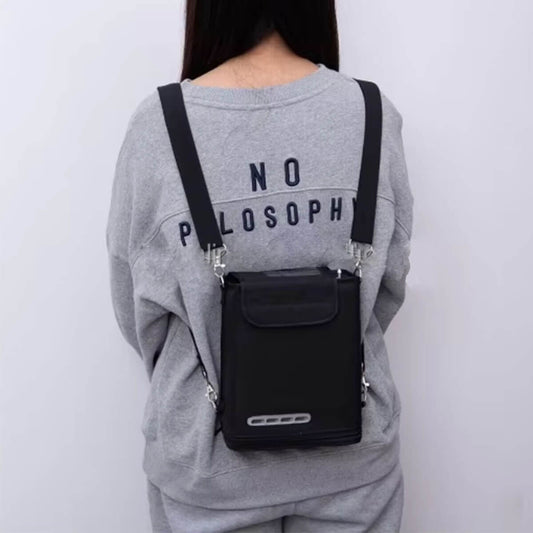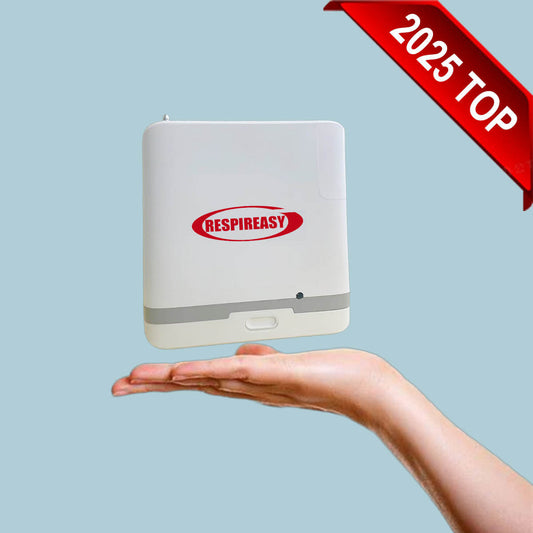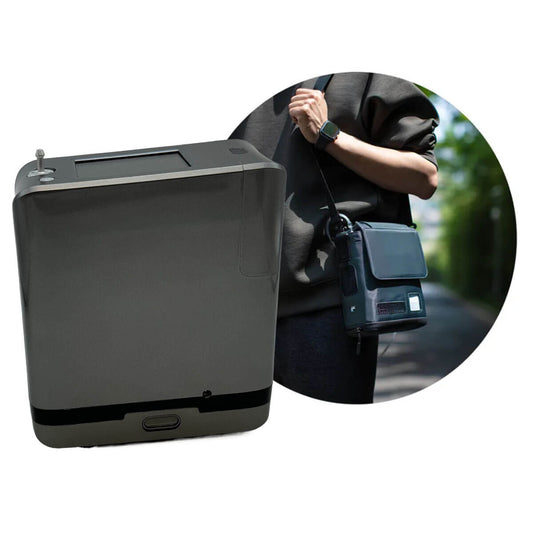How Well Do You Know about Oxygen Breathing Therapy at Home
Basic situation and definition of home oxygen therapy
In clinical practice, it is common to see some patients hospitalized due to chronic respiratory diseases (such as chronic obstructive pulmonary disease and cor pulmonale). After treatment, the condition is basically under control, but due to chronic respiratory insufficiency, they are short of breath and cyanotic when moving, and their quality of life is low. Such patients need to continue long-term oxygen therapy. In order to save costs and avoid hospital infection, they can only receive oxygen therapy at home, so it is called home oxygen therapy.
Applicable population
Home oxygen therapy is one of the important means of treating hypoxemia outside the hospital. It is usually suitable for home treatment of diseases such as bronchial asthma, chronic tracheitis, emphysema, angina pectoris, respiratory failure and heart failure.
Home oxygen therapy: classification
1. Classification according to home use scenarios
- Long-term oxygen therapy (LTOT)
- Mobile oxygen therapy (AOT)
Supplement oxygen during daytime exercise or activities, suitable for those who are not static hypoxia and dynamic hypoxia
- Nighttime oxygen therapy (NOT)
People who do not carry out oxygen therapy during the day but carry out oxygen therapy at night
- Short-term paroxysmal oxygen therapy
Simple, intermittent oxygen therapy is required to prevent hypoxemia
- Paralytic oxygen therapy (POT)
Use oxygen therapy to relieve the breathing pain of patients with end-of-life diseases and relieve their possible hypoxemia.
2. Classification according to home oxygen supply devices
- Oxygen cylinders
There are different specifications such as 10L, 20L, and 30L, which are especially suitable for patients with large flow and high oxygen demand
- Oxygen generator based on molecular sieve principle
Through nitrogen and oxygen separation technology, the molecular sieve adsorbs nitrogen and filters out harmful substances in the air, thereby obtaining purified oxygen that meets medical oxygen standards. It can be used immediately after production, and the maximum oxygen production pressure is 0.2-0.3MPa (i.e. 2-3 kg), without the danger of high pressure explosion. Currently, it is the most stable and widely used desktop instrument with different flow rates such as 3L, 5L, 8L, and 10L.
In recent years, portable molecular sieve oxygen concentrators (POC) have developed rapidly, with pulse doses of 0.75L, 1L, 1.2L and other specifications (equivalent to 3L, 5L, 6L continuous oxygen supply)
- Liquid oxygen tank
Small and portable, suitable for outdoor oxygen supply, oxygen supply time is 6 to 8 hours
- Chemical oxygen production & other methods
Chemical oxygen production-the principle of using two chemical reagents to react to produce oxygen, and its use is gradually decreasing
Portable oxygen chamber-the market has just begun
Oxygen bag-temporary emergency use in the home
3. Function and efficacy
- Relieve hypoxemia. When PaO₂ reaches 60mmHg or more and SaO₂ reaches 85% to 90%, it can basically meet the needs of tissue metabolism
- Relieve pulmonary hypertension caused by hypoxia, reduce polycythemia, reduce blood viscosity, reduce the burden on the right ventricle, and delay the occurrence and development of cor pulmonale
- Oxygen inhalation can relieve bronchospasm, relieve dyspnea, and improve ventilation dysfunction
- Improve the patient's physical condition, sleep and brain function, Improve exercise tolerance and quality of life
- Improve the prognosis of COPD patients and prolong life
- Reduce the number of hospitalizations and save medical expenses
Home oxygen therapy: long-term home oxygen therapy
Official Clinical Practice Guidelines of the American Thoracic Society: Long-term home oxygen therapy is strongly recommended for patients with severe hypoxemia
Multicenter randomized clinical trial study: The mortality rate of patients with hypoxic COPD in the nocturnal oxygen therapy group was 1.94 times that of the continuous oxygen therapy group
Official Canadian evidence-based analysis: The mortality rate of COPD patients with severe hypoxemia in the long-term oxygen therapy group was significantly lower than that in the non-long-term oxygen therapy group
- 1, Susan S, et al. Home Oxygen Therapy for Adults with Chronic Lung Disease: An Official American Thoracic Society Clinical Practice Guideline. American Journal of Respiratory and Critical Care Medicine Volume 202, Issue 10:e121-e141.
- 2, Continuous or nocturnal oxygen therapy in hypoxemic chronic obstructive lung disease: a clinical trial. Nocturnal Oxygen Therapy Trial Group. Ann Intern Med. 1980 Sep;93(3):391-8. doi: 10.7326/0003-4819-93-3-391. PMID: 6776858
COPD with severe hypoxemia
Chronic obstructive pulmonary disease, referred to as COPD, is a common chronic respiratory disease characterized by persistent airflow limitation. According to the research results published in the international authoritative medical journal "The Lancet" by Wang Chen, an academician of the Chinese Academy of Engineering and an expert in respiratory medicine and critical care medicine, the number of COPD patients in my country has exceeded 100 million, making it the third most common chronic disease in China after hypertension and diabetes!
According to the description of the evidence and quality of "Long-term oxygen therapy is recommended for COPD patients with severe hypoxemia" in the "Official Clinical Practice Guidelines of the American Thoracic Society":
Reduce the risk of death
The NOTT study of 203 subjects showed that the 2-year risk of death was reduced by 55% in the trial group prescribed 24-hour/day oxygen therapy compared with the control group prescribed only nighttime oxygen (relative risk [RR], 0.45; 95% confidence interval [C], 0.25-0.81)
The MRC study of 87 subjects showed that the 5-year risk of death in patients with LTOT was reduced by 59% compared with no oxygen use (RR, 0.41; 95%CI0.17-0.98)
Reduce the number of days in the hospital
A retrospective study found that subjects who used LTOT had fewer hospitalizations within 3 years compared with conventional treatment (mean difference [MD], -1.17; 95%CI, -1.73 to -0.59)
An observational study found that Among patients who received LTOT, the number of days of follow-up hospital stay (years/patient) was reduced by 35% (RR, 0.65; 95%CI r 0.40-1.05).
Has pharmacoeconomic advantages
In the United States, for COPD patients with severe hypoxemia, the incremental cost-effectiveness ratio of long-term oxygen therapy is $16,124 per additional quality-adjusted life year (QALY), which is considered to be within the acceptable range.
Therefore, LTOT is considered to be a cost-effective prescription with pharmacoeconomic advantages
- 1, Susan S, et al. Home Oxygen Therapy for Adults with Chronic Lung Disease: An Official American Thoracic Society Clinical Practice Guideline. American Journal of Respiratory and Critical Care Medicine Volume 202, Issue 10:e121-e141.
- 2, Oba Y. Cost-effectiveness of long-term oxygen therapy for chronic obstructive disease. Am J Manag Care. 2009 Feb;15(2):97-104. PMID: 19284806.
Home oxygen therapy for COPD patients:
- Using oxygen concentrators
- Using ventilators and oxygen concentrators
The results of a prospective observational study conducted in Barcelona showed that the average blood oxygen saturation increased (91% VS 88%; p = 0.0005) and the cumulative time of blood oxygen saturation below 90% (CT90) decreased (36% VS 58%; p < 0.0001) in the group using non-invasive ventilation combined with oxygen therapy.
- Cuerpo S, Palomo M, Hernández-González F, Francesqui J, Albacar N, Hernández C, Blanco I, Embid C, Sellares J. Improving home oxygen therapy in patients with interstitial lung diseases: application of a noninvasive ventilation device. Ther Adv Respir Dis. 2020 Jan-Dec;14:1753466620963027
Special Recommendation:
Interstitial pneumonia (ILD) with severe hypoxemia
ILD has a painful course
Severe hypoxemia is highly prevalent in people with interstitial lung disease (ILD).
Patients with idiopathic pulmonary fibrosis (IPF) often experience a progressive course characterized by dyspnea, cough, hypoxemia, acute respiratory exacerbations, and early death.
When present, severe hypoxemia is often disabling and distressingly dyspneic.
Oxygen therapy is the only treatment
Other than lung transplantation, supplemental oxygen is the only treatment that can improve hypoxemia that persists despite optimal medical treatment of the underlying disease.
LTOT benefits patients
The American Thoracic Society Official Clinical Practice Guideline Panel judged that the benefits of LTOT for the treatment of severe hypoxemia are substantial for most adults with ILD. As previously mentioned, LTOT for the treatment of severe hypoxemia may reduce mortality in patients with COPD and may also prevent organ dysfunction due to severe persistent hypoxemia, including prevention of PH. Other benefits include relief of dyspnea and improvements in disability and health-related quality of life (HRQL).
- Susan S, et al. Home Oxygen Therapy for Adults with Chronic Lung Disease: An Official American Thoracic Society Clinical Practice Guideline. American Journal of Respiratory and Critical Care Medicine Volume 202, Issue 10:e121-e141. ERAPY APY NG TERM OXYGEN THERAPY

High quality oxygen concentrator supplier,reliable product and service
DEDAKJ oxygen concentrator manufacturer provides various models of 1-9L home oxygen concentrators, up to 20LPM medical oxygen concentrators as well as the 2 lbs lightweight portable oxygen concentrator for traveling.
This is top-rated DEDAKJ oxygen concentrator supplier, providing both DEDAKJ 10- 20 liter medical oxygen concentrators and 1-9 liters home oxygen breathing machines, and DEDAKJ oxygen accessories parts.
For more information on oxygen concentrators, please feel free to consult us.
And you are we welcome to place the order in our official store directly.
We are operating the USA, Europe, Mexico and UK local warehouses.
Usually you can receive the parcel within 3-6 days,very fast shipping time.
More important, as the honorable oxygen concentrator supplier, we can offer 1 year quality warranty to our customers!






























